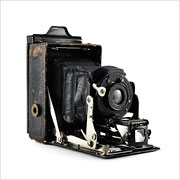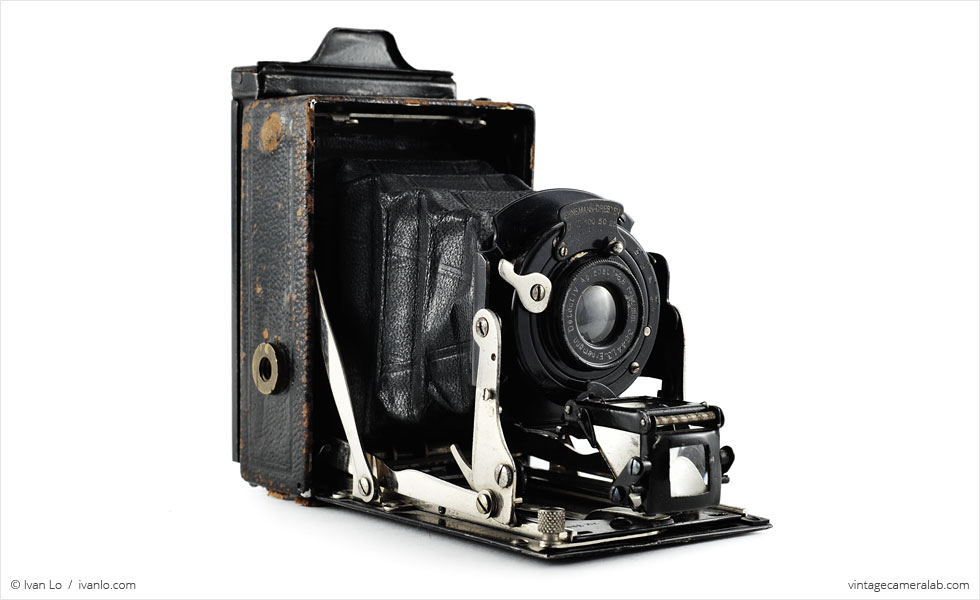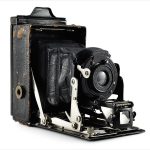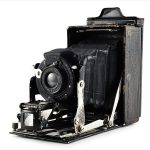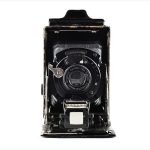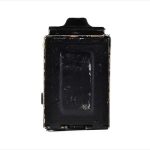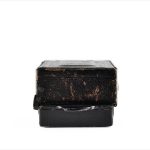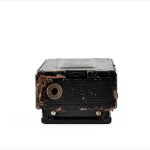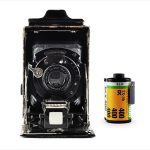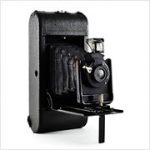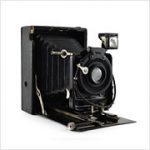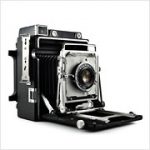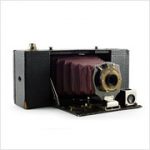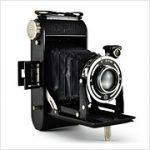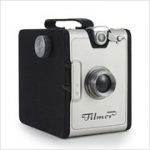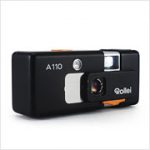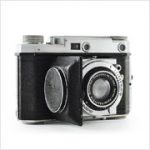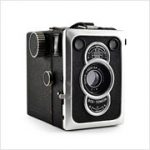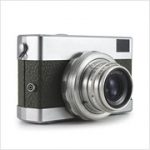Ernemann Heag XV Specifications
| Manufacturer: | Ernemann-Werke AG |
| Origin: | German Empire |
| (modern day Germany) | |
| Made in: | Dresden, German Empire |
| (modern day Germany) | |
| Introduced: | 1911 |
| Type: | Folding, View Camera, Viewfinder |
| Format: | 4.5 x 6 cm Glass Plates / |
| Film Sheets | |
| Dimensions: | 6.2 x 9.8 x 4.4 cm (closed) |
| 6.2 x 9.8 x 13.3 cm (open) |
Ernemann Heag XV Overview
Roughly the size of a large stack of playing cards, the Ernemann Heag XV is a pocket-sized folding camera introduced in 1911 by Ernemann. Founded by Heinrich Ernemann in 1889, the company produced both still and cinema cameras as well as projection equipment. After its defeat in the First World War, the Treaty of Versailles forced Germany to pay an enormous amount of money in reparations (about 442 billion USD in today’s economy, a sum they only just finished paying off in 2010) which absolutely devastated its economy. Unfortunately, the German camera industry floundered during this period of hyperinflation, causing Ernemann to merge with three other companies (ICA, Goerz, and Contessa-Nettel) to form Zeiss Ikon.
To open up the camera and reveal the lens, users must press a hidden button on the right-hand side panel. Like many cameras, the Heag XV was offered with several different lenses during its 14 year production life including a Zeiss Tessar. Mine, however, is fitted with an Ernemann-designed 80mm f/6.8 Detectiv Aplanat lens whose aperture can be selected at the 2-3 o’clock marks on the lens barrel. Connected to the lens is a shutter with five available speeds (Time (“Oâ€), Bulb (“Zâ€), 1/100, 1/50, and 1/25 seconds) set by moving a dial just above the lens and triggered by the silver lever at 10 o’clock. Composition is achieved through the rotatable right-angle viewfinder in front of the lens which neatly folds away when you retract the lens and focus is tuned by moving the small knurled knob next to the viewfinder.
Curiously, the Heag XV was designed to use 4.5 x 6 centimeter photographic glass plates and film sheets which can be loaded in modular film backs and clipped onto the camera. However, because of its removable back, the Heag can potentially be used with a huge variety of films and even digital sensors if properly adapted. I’ve actually tried using my Sony NEX-5N with this Ernemann but its hazy glass meant less than stellar results.
Given its format, size, and age, the Heag XV is probably one of the most unique cameras in my collection. I paid a very reasonable $30 at a local flea market for the camera, a sheet film back and several glass plate backs. The overall condition is respectable although far from perfect. There are many flaws in the leatherette and the lens is hazy but mechanically, it’s pretty much perfect. The shutter fires with reasonable accuracy at all speeds and the clever folding mechanism is pure magic to behold. The Heag XV is also my first Ernemann, a brand that I’ve since become somewhat obsessed with because, as far as I can tell, they’ve never made a single boring camera.
Find your very own Ernemann Heag XV on eBay.
McKeown, James M. and Joan C. McKeown’s Price Guide to Antique and Classic Cameras, 2001-2002. (Grantsburg, WI, USA: Centennial Photo Service, 2001), p 201.
